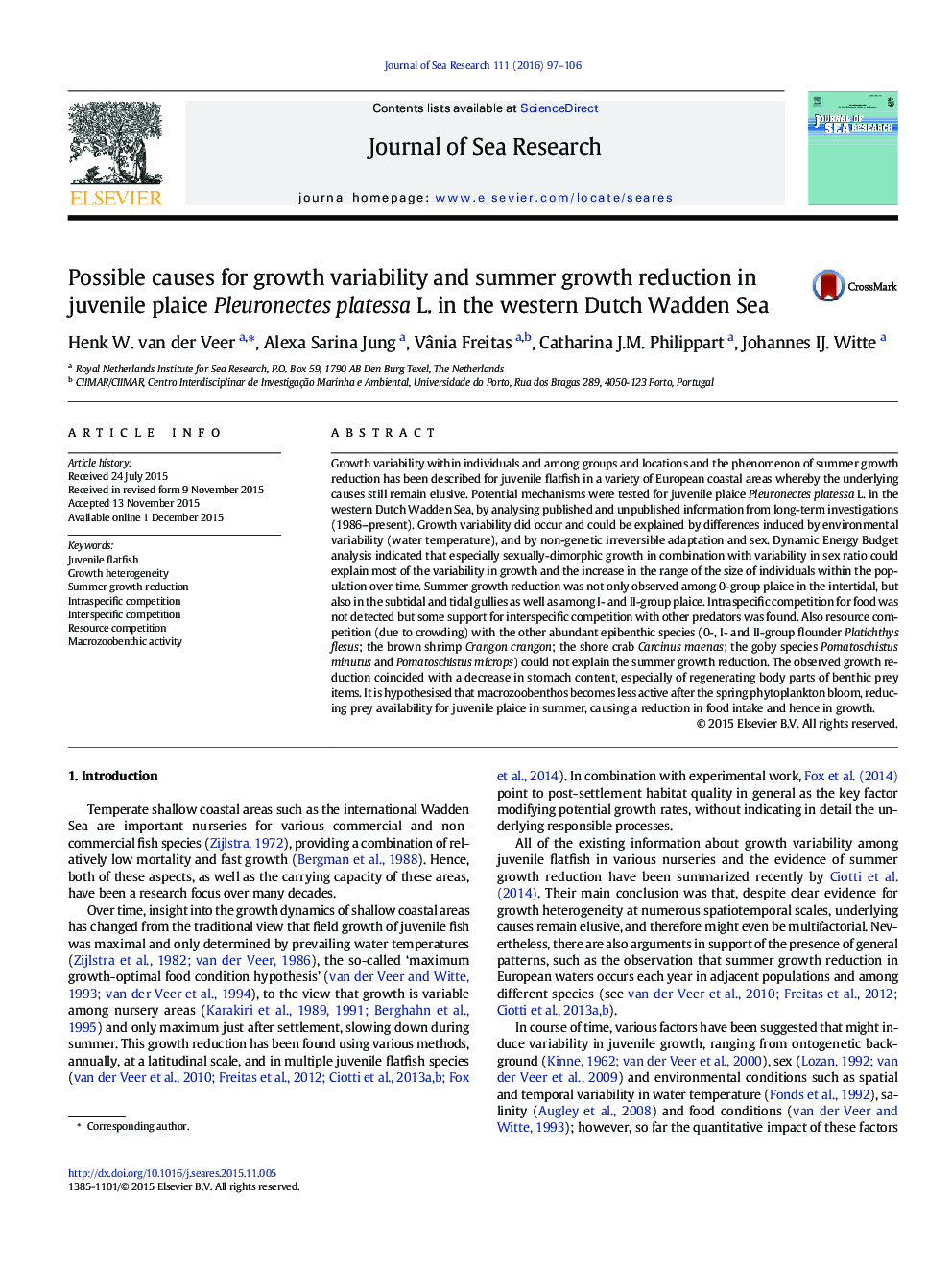| کد مقاله | کد نشریه | سال انتشار | مقاله انگلیسی | نسخه تمام متن |
|---|---|---|---|---|
| 4549510 | 1627464 | 2016 | 10 صفحه PDF | دانلود رایگان |

• Variability in size could be explained by environmental variability (water temperature), non-genetic irreversible adaptation and sex.
• Especially sex could explain most of the variability in growth.
• Intraspecific and resource competition for food was absent
• The observed growth reduction coincided with a decrease in stomach content, especially of regenerating body parts of benthic prey items.
• It is hypothesised that growth reduction in summer is caused by reduced benthic activity after the spring phytoplankton bloom
Growth variability within individuals and among groups and locations and the phenomenon of summer growth reduction has been described for juvenile flatfish in a variety of European coastal areas whereby the underlying causes still remain elusive. Potential mechanisms were tested for juvenile plaice Pleuronectes platessa L. in the western Dutch Wadden Sea, by analysing published and unpublished information from long-term investigations (1986–present). Growth variability did occur and could be explained by differences induced by environmental variability (water temperature), and by non-genetic irreversible adaptation and sex. Dynamic Energy Budget analysis indicated that especially sexually-dimorphic growth in combination with variability in sex ratio could explain most of the variability in growth and the increase in the range of the size of individuals within the population over time. Summer growth reduction was not only observed among 0-group plaice in the intertidal, but also in the subtidal and tidal gullies as well as among I- and II-group plaice. Intraspecific competition for food was not detected but some support for interspecific competition with other predators was found. Also resource competition (due to crowding) with the other abundant epibenthic species (0-, I- and II-group flounder Platichthys flesus; the brown shrimp Crangon crangon; the shore crab Carcinus maenas; the goby species Pomatoschistus minutus and Pomatoschistus microps) could not explain the summer growth reduction. The observed growth reduction coincided with a decrease in stomach content, especially of regenerating body parts of benthic prey items. It is hypothesised that macrozoobenthos becomes less active after the spring phytoplankton bloom, reducing prey availability for juvenile plaice in summer, causing a reduction in food intake and hence in growth.
Journal: Journal of Sea Research - Volume 111, May 2016, Pages 97–106